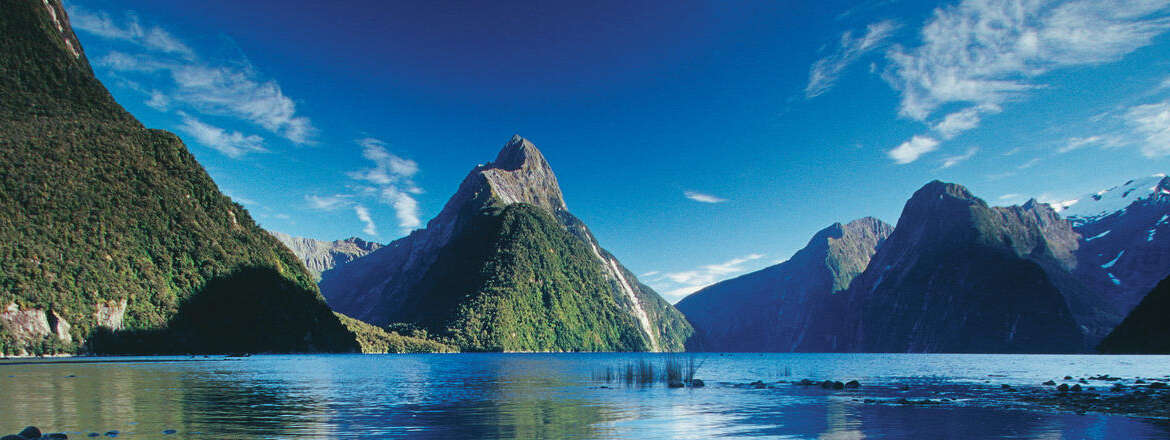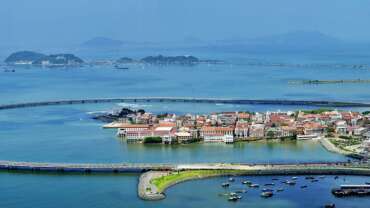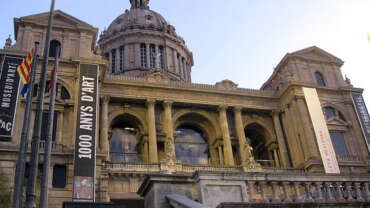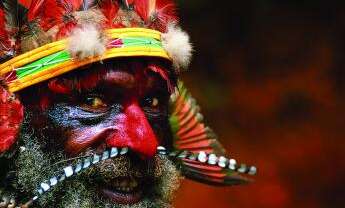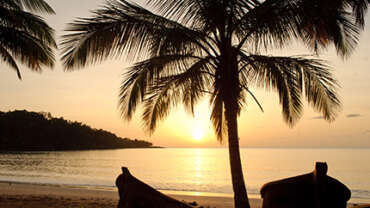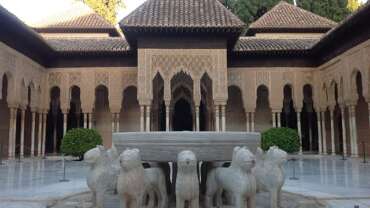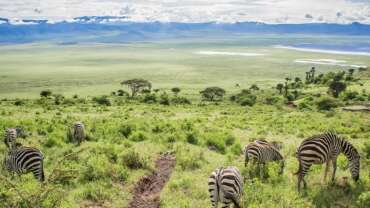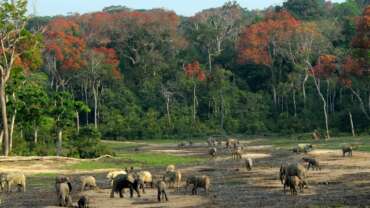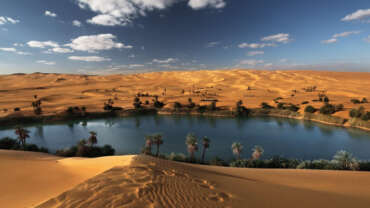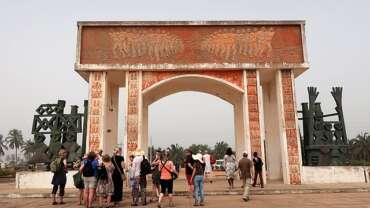100% Pure New Zealand
New Zealand is an island country in the southwestern Pacific Ocean. It consists of two main landmasses—the North Island and the South Island —and more than 700 smaller islands, covering a total area of 268,021 square kilometres.
Across New Zealand, you can find everything from untamed wilderness to rich culture. Find inspiration in towering mountains and mist-cloaked fjords. Serenity in golden beaches curled around quiet bays. New friends in small towns with big doses of laid-back charm.
History of New Zealand
New Zealand has a rich and fascinating history, reflecting our unique mix of Māori and European culture. Māori were the first to arrive in New Zealand, journeying in canoes from Hawaiki about 1,000 years ago. A Dutchman, Abel Tasman, was the first European to sight the country but it was the British who made New Zealand part of their empire.
In 1840, the Treaty of Waitangi was signed, an agreement between the British Crown and Maori. It established British law in New Zealand and is considered New Zealand’s founding document and an important part of the country’s history. The building where the treaty was signed has been preserved and, today, the Waitangi Treaty Grounds are a popular attraction.
You’ll find amazing Māori historic sites and taonga (treasures) – as well as beautiful colonial-era buildings – dotted throughout the country. A walk around any New Zealand city today shows what a culturally diverse and fascinating country we have become.
THE ARRIVAL OF MĀORI
Māori were the first inhabitants of New Zealand or Aotearoa, guided by Kupe the great navigator
When did Maori first arrive in New Zealand? According to Māori, the first explorer to reach New Zealand was Kupe. Using the stars and ocean currents as his navigational guides, he ventured across the Pacific on his waka hourua (voyaging canoe) from his ancestral Polynesian homeland of Hawaiki. It is thought that Kupe made landfall at the Hokianga Harbour in Northland, around 1000 years ago.
Where is Hawaiki?
You will not find Hawaiki on a map, but it is believed Māori came from an island or group of islands in Polynesia in the South Pacific Ocean. There are distinct similarities between the Māori language and culture and others of Polynesia including the Cook Islands, Hawaii, and Tahiti.
Tribal Waka
More waka hourua followed Kupe over the next few hundred years, landing at various parts of New Zealand. It is believed that Polynesian migration was planned and deliberate, with many waka hourua making return journeys to Hawaiki. Today, Māori are part of an iwi (tribe), a group of people who are descendants of a common ancestor and associated with a certain region or area in New Zealand. Each iwi has their own hapū (sub-tribes). Iwi can trace their entire origins and whakapapa (genealogy) back to certain waka hourua. The seven waka that arrived to Aotearoa were called Tainui, Te Arawa, Mātaatua, Kurahaupō, Tokomaru, Aotea and Tākitimu.
Living off the land
Māori were expert hunters, gatherers and growers. They wove fishing nets from harakeke (flax), and carved fishhooks from bone and stone. They hunted native birds, including moa, the world’s largest bird, with a range of ingenious traps and snares.
Māori cultivated land and introduced vegetables from Polynesia, including the kūmara (sweet potato) and often cooked hāngi (an earth oven). They also ate native vegetables, roots and berries. Woven baskets were used to carry food, which was often stored in a pātaka — a storehouse raised on stilts.
Defence and weapons
To protect themselves from being attacked by others, Māori would construct pā (fortified village). Built in strategic locations, pā were cleverly constructed with a series of stockades and trenches protecting the inhabitants from intruders. Today, many historic pā sites can be found throughout the country.
Māori warriors were strong and fearless, able to skillfully wield a variety of traditional weapons(opens in new window), including the spear-like taiaha and club-like mere. Today, these weapons may be seen in Māori ceremonies, such as the wero (challenge). You can also find these traditional weapons in museums.
Moriori
While Māori lived throughout the North and South Islands, the Moriori, another Polynesian tribe, lived on the Chatham Islands, nearly 900 kilometres east of Christchurch. Moriori are believed to have migrated to the Chathams from the South Island of New Zealand. In the late 18th century, there were about 2000 Moriori living on the Chathams. However, disease and attacks from Māori saw the numbers of this peace-loving tribe become severely depleted. The last full-blooded Moriori is believed to have died in 1933.
THE ARRIVAL OF EUROPEANS
Though a Dutchman was the first European to sight the country, it was the British who colonised New Zealand.
Early visitor from the Netherlands
The first European to sight New Zealand was Dutch explorer Abel Tasman. He was on an expedition to discover a great Southern continent ‘Great South Land’ that was believed to be rich in minerals. In 1642, while searching for this continent, Tasman sighted a ‘large high-lying land’ off the West Coast of the South Island.
Abel Tasman annexed the country for Holland under the name of ‘Staten Landt’ (later changed to ‘New Zealand’ by Dutch mapmakers). Sailing up the country’s West Coast, Tasman’s first contact with Māori was at the top of the South Island in what is now called Golden Bay. Two waka (canoes) full of Māori men sighted Tasman’s boat. Tasman sent out his men in a small boat, but various misunderstandings saw it rammed by one of the waka. In the resulting skirmish, four of Tasman’s men were killed.
Tasman never set foot on New Zealand, and after sailing up the West Coast, went on to some Pacific Islands, and then back to Batavia (now Jakarta) in the Dutch East Indies (now Indonesia). His mission to New Zealand was considered unsuccessful by his employers, the Dutch East India Company, Tasman having found ‘no treasures or matters of great profit’.
Enter Britain
Captain James Cook, sent to Tahiti to observe the transit of Venus, was also tasked with the search for the great southern continent thought to exist in the southern seas. Cook’s cabin boy, Young Nick, sighted a piece of land (now called Young Nick’s Head) near Gisborne in 1769. Cook successfully circumnavigated and mapped the country, and led two more expeditions to New Zealand before being killed in Hawaii in 1779.
Early European settlers
Prior to 1840, it was mainly whalers, sealers, and missionaries who came to New Zealand. These settlers had considerable contact with Māori, especially in coastal areas. Māori and Pākehā (Europeans) traded extensively, and some Europeans lived among Māori. The contribution of guns to Māori intertribal warfare, along with European diseases, led to a steep decline in the Māori population during this time.
TREATY OF WAITANGI
Signed in 1840, the Treaty of Waitangi is an agreement between the British Crown and Māori.
Around this time, there were 125,000 Māori and about 2000 settlers in New Zealand. Sealers and whalers were the first Europeans settlers, followed by missionaries. Merchants also arrived to trade natural resources such as flax and timber from Māori in exchange for clothing, guns and other products.
As more immigrants settled permanently in New Zealand, they weren’t always fair in their dealings with Māori over land. A number of Māori chiefs sought protection from William IV, the King of England, and recognition of their special trade and missionary contacts with Britain. They feared a takeover by nations like France, and wanted to stop the lawlessness of the British people in their country.
The Treaty of Waitangi drafted and signed
As British settlement increased, the British Government decided to negotiate a formal agreement with Māori chiefs to become a British Colony. A treaty was drawn up in English then translated into Māori.
The Treaty of Waitangi was signed on February 6, 1840, at Waitangi in the Bay of Islands. Forty-three Northland Chiefs signed the treaty on that day. Over 500 Māori Chiefs signed it as it was taken around the country during the next eight months.
The articles
The Treaty had three articles: that the Queen (or king) of Great Britain has the right to rule over New Zealand;
that Māori chiefs would keep their land and their chieftainships, and would agree to sell their land only to the British monarch; and that all Māori would have the same rights as British subjects.
It is the second and third articles have caused controversy through the years, mainly because of translation problems. Successive governments believed the Treaty enabled complete sovereignty over Māori, their lands and resources. But Māori believed that they were merely giving permission for the British to use their land.
Conflict breaks out
Disputes over ownership followed involving a series of violent conflicts during the 19th century. These became known as the New Zealand Land Wars, and were concentrated around Northland and the southern part of the North Island during the 1840s, and the central North Island in the 1860s. Both sides suffered losses, with the Brittish Crown the eventual victor. Land confiscation and questionable land sales carried on through to the 20th century, until the vast majority of land in New Zealand was owned by settlers and the Crown.
Today’s Treaty
Following its signing, many of the rights guaranteed to Māori in the Treaty of Waitangi were ignored. To help rectify this, the Waitangi Tribunal was set up in 1975. It has ruled on a number of claims brought by Māori iwi (tribes) and in many cases, compensation has been granted.
While disagreements over the terms of the treaty continue to this day, it is still considered New Zealand’s founding document.
The grounds and building where the treaty was signed have been preserved. Today, the Waitangi Historic Reserve is a popular tourist attraction. Here you can explore the museum, watch a cultural performance inside the carved Māori meeting house, and visit the colonial mission house, historic flagstaff, and beautiful waka taua (Māori war canoe).
THE LEGEND OF NEW ZEALAND
Māori legend says New Zealand was fished from the sea by the daring demigod Māui.
Who is Māui?
According to Māori and Polynesian myths and legends, Māui was the gifted and clever demigod, who, after a miraculous birth and upbringing won the affection of his supernatural parents.
He was bold and sharp-witted and taught useful arts to mankind although he was not always liked. He tamed the sun and bought fire to the world but one of his most famous feats was the creation of the islands we know today as Aotearoa, New Zealand.
Fishing up the North Island
Māori legend says that one-night Māui’s four brothers planned to go fishing and leave him behind. Overhearing their plans and not wanting to be left out, Māui hid under the floorboards of his brother’s canoe and waited until they were far away from the shore before revealing himself. He had carved a magic fishhook from an ancestors’ jawbone and he cast it deep into the sea, chanting powerful words.
Soon, Māui realised he had caught something. Something huge! With the help of his brothers, the catch was hurled to the surface of the water. Much to their surprise the fish they had caught was in fact a huge piece of land and they were delighted to find that they had discovered ‘Te Ika a Māui’ (Māui’s fish), which we know today as the North Island.
Before Māui had time to thank Tangaroa (the god of the sea) for the gift of this land, Māui’s brothers began carving out pieces of the huge fish, creating the many valleys, mountains, and lakes that you see today on the North Island.
The legend of the South Island
‘Te Waka a Māui’ (Māui’s canoe) or what we know now as the South Island is said to be the waka or canoe that Māui and his brothers fished from. It’s believed that the Kaikōura Peninsula on the east coast of the South Island is the place where the seat of the canoe was situated, where Māui stood to haul in his giant catch.
Stewart Island-Rakiura is believed to be the anchor from the canoe and is named ‘Te Punga a Māui’ (Māui’s anchor stone).
20TH AND 21ST CENTURY NEW ZEALAND
While retaining some ties to the British Crown, New Zealand has become a proud nation in its own right.
Colonial Ties
Throughout the 19th and much of the 20th century, the ‘homeland’ of Britain had an enormous influence on New Zealand. Government administration, education, and culture were largely built on British models. New Zealand troops fought, and suffered severe casualties in the Boer War and the two World Wars. As Prime Minister Michael Savage said about England in 1939, ‘where she goes, we go, where she stands, we stand’.
A New Buddy
After World War II, cultural ties with Great Britain remained strong. However, successive New Zealand governments saw the USA as their major ally and protector. New Zealand signed the joined SEATO (South-East Asia Treaty Organisation) and signed the ANZUS (Australia, New Zealand, and United States) Pact. New Zealand troops also fought with US forces during the Korean and Vietnam wars.
A nation in its own right
While New Zealand is still heavily influenced by its colonial heritage, the country now has its own strong sense of identity. While still a member of the British Commonwealth, and maintaining close, friendly relations with the USA, New Zealand now has a far more independent trading and foreign policy. Since the mid 1980s, New Zealand has been a nuclear free zone, with its armed forces primarily focused on peacekeeping in the Pacific region.
People of New Zealand
New Zealanders are friendly and down-to-earth people who embrace the spirit of manaakitanga, or hospitality.
With a patchwork history of Māori, European, Pacific Island and Asian influences, New Zealand’s population of five million people is a melting-pot of cultures.
Today, the population of New Zealand(opens in new window) is made up of people from a range of backgrounds; 70% are of European descent, 16.5% are indigenous Māori, 15.1% Asian and 8.1% non-Māori Pacific Islanders.
Geographically, over three-quarters of the population live in the North Island, with one-third of the total population living in Auckland. The other main cities of Wellington, Christchurch and Hamilton are where the majority of the remaining Kiwis dwell.
New Zealand demographics don’t tell the full story. Beyond the numbers, what are Kiwi people really like?
Why are New Zealanders called Kiwis?
The name ‘kiwi’ comes from the curious little flightless bird that is unique to New Zealand.
Māori people have always held the kiwi bird in high regard. Their feathers were used to make ‘kahu kiwi’, valuable cloaks worn by tribal chiefs.
In the early 1900s, cartoonists started to use images of the kiwi bird to represent New Zealand as a country.
During the First World War, New Zealand soldiers were referred to as ‘kiwis’, and the nickname stuck.
Eventually, the term Kiwi was attributed to all New Zealanders, who proudly embraced the moniker. Just like the bird, New Zealanders are unique, adaptable and a little quirky.
The quirks and values of Kiwi people
New Zealanders share a set of values that arise from Māori cultural influences, early pioneering spirit, and a love of sports and the outdoors.
Early voyagers
Over four hundred years before Christopher Columbus and the rest of Europe worried about falling off the edge of the world, Māori people voyaged thousands of miles across the vast unknown Pacific Ocean in small ocean-going canoes and became the first inhabitants of Aotearoa New Zealand.
To this day, Maori culture is a core part of New Zealand’s national identity.
Rugged Pioneers
New Zealand’s European pioneers were also brave, rugged and independent. Before establishing farms and settlements, they had to first clear the land – a painstaking and sometimes dangerous activity. Their isolation and exposure to the elements forced these early New Zealanders to become hardy and multi-skilled.
This resourcefulness and ingenuity has greatly contributed to the New Zealand character. The same qualities can be seen today in the new pioneers – a generation of young Kiwi business executives, computer software builders, film-makers, fashion designers, and sportspeople making waves around the world.
Backyard Genius
Since before Sir Ernest Rutherford ‘split’ the atom early in the twentieth century, Kiwis have been discovering and inventing things. Many of these inventions have literally been created in a backyard. While frozen meat, the Hamilton Jet boat, and the bungy jump are probably our most famous Kiwi inventions, there are many others.
New Zealanders are also responsible for the tranquilliser gun, seismic ‘base’ isolators (rubber and lead blocks which minimise earthquake damage), electric fences, the fastest motorbike in the world, freezer vacuum pumps, stamp vending machines, wide-toothed shearing combs, and the electronic petrol pump – to name a few!
Kiwis love the great outdoors
For the same reason that many visitors come to New Zealand, Kiwis have developed a passion for the outdoors and delight in activities that make the most of the spectacular landscape.
With so much coastline, it’s little wonder New Zealanders love the water and it’s reputed that over 15% of New Zealand families own their own boat. Respected as superior yacht designers, Kiwis continue to dominate on the world yachting, kayaking, windsurfing and rowing scene.
Hiking, camping, fishing, bush and beach walks are other popular outdoor pursuits. The more intrepid take to the mountains; following in the footsteps of perhaps the most adventurous Kiwi, Sir Edmund Hillary, who conquered Mount Everest, the world’s highest mountain, in 1953.
Geography & Geology of New Zealand
You’ll find a variety of awesome landscapes in New Zealand, all within easy reach of each other.
Spectacular glaciers, picturesque fiords, rugged mountains, vast plains, rolling hillsides, subtropical forest, volcanic plateau, miles of coastline with gorgeous sandy beaches – it’s all here. No wonder New Zealand is becoming so popular as a location for movies.
Lying in the south-west Pacific, New Zealand consists of two main islands – the North Island and the South Island. Stewart Island and many smaller islands lie offshore.
The North Island of New Zealand has a ‘spine’ of mountain ranges running through the middle, with gentle rolling farmland on both sides. The central North Island is dominated by the Volcanic Plateau, an active volcanic and thermal area. The massive Southern Alps form the backbone of the South Island. To the east of the Southern Alps is the rolling farmland of Otago and Southland, and the vast, flat Canterbury Plains.
How it began
New Zealand’s oldest rocks are over 500 million years old, and were once part of Gondwanaland. This massive super-continent started to split up about 160 million years ago, and New Zealand separated from it about 85 million years ago.
New Zealand sits on two tectonic plates – the Pacific and the Australian. Fifteen of these gigantic moving chunks of crust make up the Earth’s surface. The North Island and some parts of the South Island sit on the Australian Plate, while the rest of the South Island sits on the Pacific. Because these plates are constantly shifting and grinding into each other, New Zealand gets a lot of geological action.
Geothermal areas and hot springs
This subterranean activity blesses New Zealand with some spectacular geothermal areas and relaxing hot springs, as well as providing electricity and heating in some areas. Rotorua is the main hub for geothermal attractions, with plenty of mud pools, geysers, and hot springs in its active thermal areas — not to mention its trademark ‘Sulphur City’ smell. First settled by Maori who used the hot springs for cooking and bathing, Rotorua soon attracted European residents. The reputed health benefits of its hot pools quickly earned the area the name of ‘Cureland’.
Beyond Rotorua, you can enjoy hot springs and other thermal activity in most regions of the North Island north of Turangi, as well as in Hanmer Springs and the West Coast in the South Island.
Gentle, sandy beaches to wild, rugged coastlines
New Zealand has over 15,000 kilometres of beautiful and varied coastline. In the Far North and on most of the East Coast of the North Island you’ll find long sandy beaches perfect for swimming, surfing and sunbathing. The North Island’s west coast has dark sandy beaches, with sand heavy in iron. The north of the South Island has some beautiful sandy beaches, while the coastline around the rest of the South Island tends to be wilder and more rugged.
Mountain ranges to fertile farmland
About a fifth of the North Island and two-thirds of the South Island are mountains. Stretching from the north of the North Island to the bottom of the South, these mountains are caused by the collision of the Australian and Pacific Plates.
Over millions of years, alluvial deposits (eroded from the mountains by rivers) formed the vast Canterbury Plains in the South Island and a number of smaller plains in the North. These alluvial plains contain some of New Zealand’s most fertile and productive farmland.
Glaciers of grinding ice
New Zealand’s Southern Alps have a number of glaciers, the largest being Tasman glacier, which you can view by taking a short walk from Mount Cook village. New Zealand’s most famous glaciers are the Franz Josef and Fox on the South Island’s West Coast. Gouged out by moving ice over thousands of years, these spectacular glaciers are easily accessible to mountaineers and hikers. You can walk up to the glaciers or do a heli-hike — fly up by helicopter and walk down.
Sunken Mountains
Over thousands of years, the process of subduction has seen parts of the New Zealand landscape become submerged. The Marlborough Sounds and Fiordland are examples of high mountain ranges that have ‘sunk’ into the sea, creating spectacular sounds and fiords. These areas provide some of New Zealand most picturesque scenery, with steep lush hills plunging down to the deep still bays below. Clear, deep still water surrounded by beautiful bush makes these areas ideal for boating and kayaking.
Luxury Travel in New Zealand
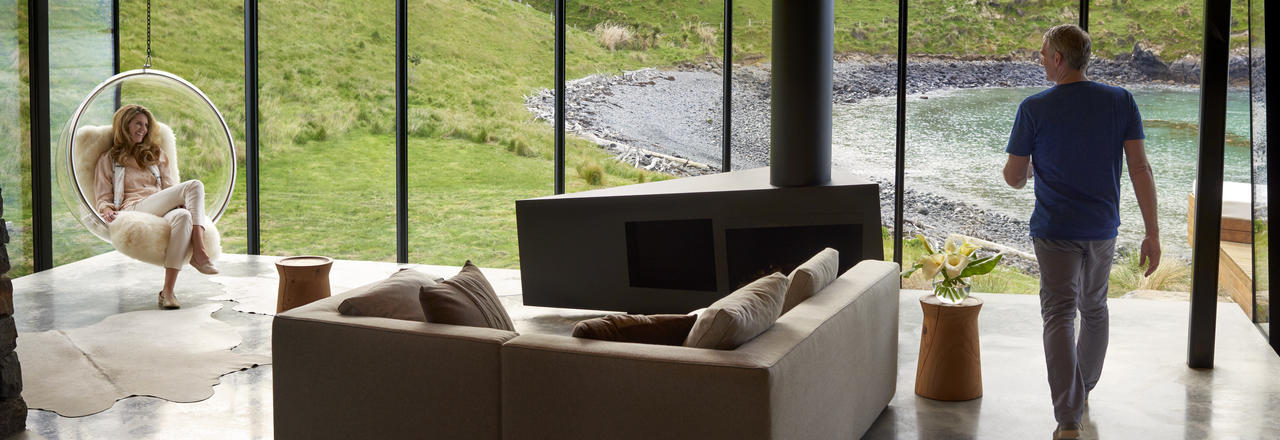
Discover New Zealand’s unique and beautiful landscapes, vibrant culture and authentic experiences when you come for a luxury stay.
From rugged alpine terrain through to the shimmering waters of a sub-tropical cove, New Zealand’s regions are incredibly diverse and home to some of the best luxury experiences in the world.
Find a bespoke encounter that speaks directly to you, whether it be pure relaxation, alpine fun, adrenaline-fuelled action, fly fishing or golf. At the end of your day, relive your experiences in the lavish surrounds of your premium lodge or resort, where nature meets luxury in effortless style.
A holiday in New Zealand lets you disconnect from the hectic pace of the rest of the world. Lose yourself in the natural beauty of the country, the world-class activities, innovative cuisine, and genuine warmth of the people. This is the destination where treasured memories are made.



